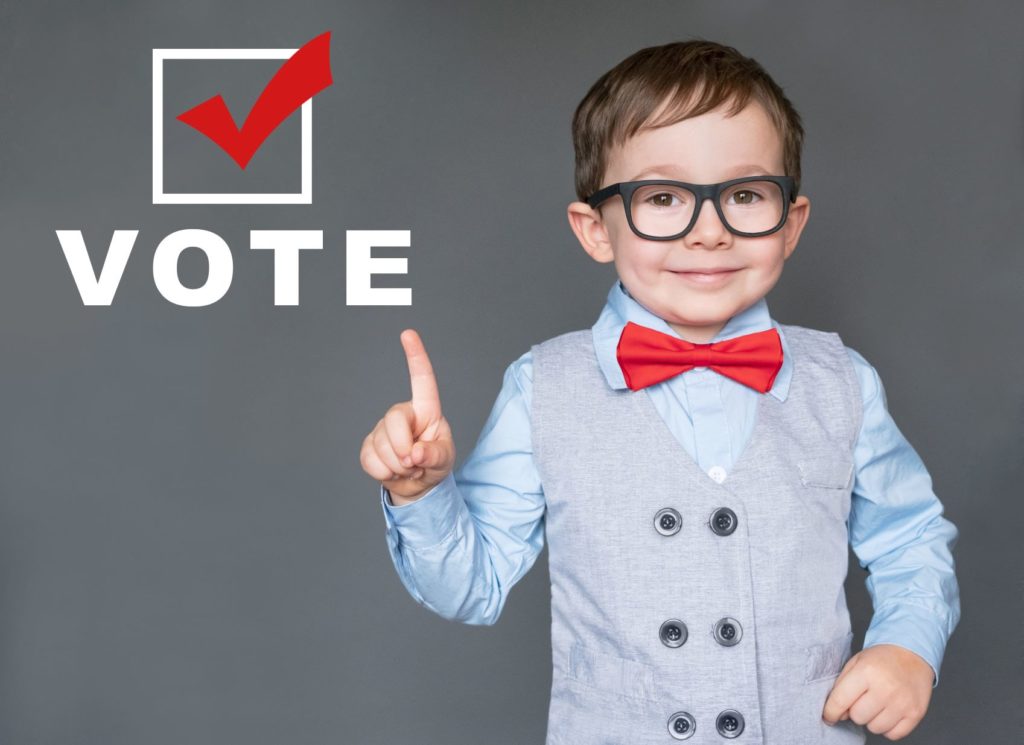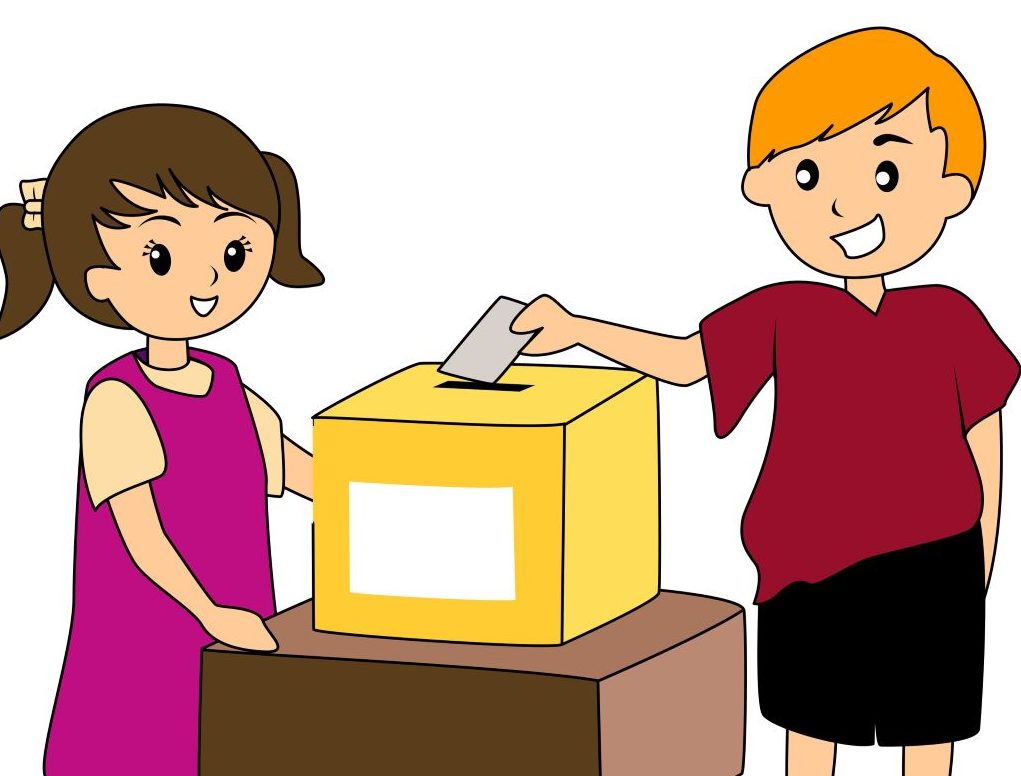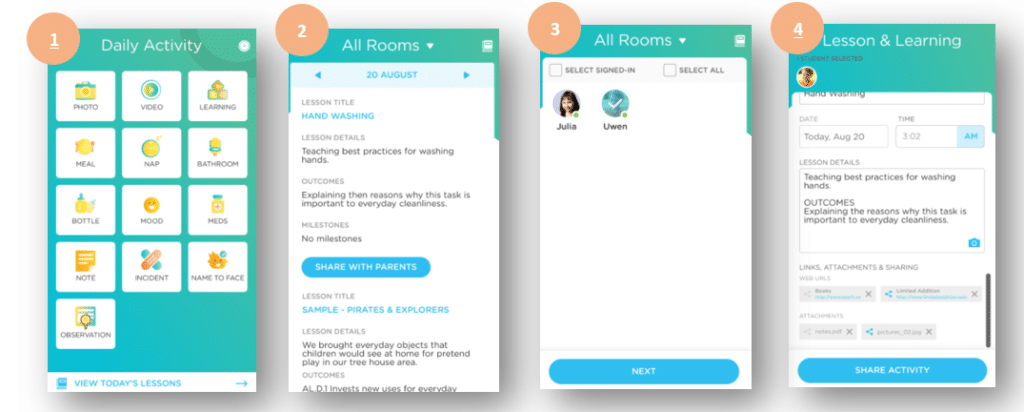
Election Day is coming up in many states! The kids in your care likely have heard the grown-ups in their lives talk about candidates or issues on the ballot, or have noticed political yard signs in their neighborhoods.
It’s a great time to talk about elections with your preschoolers, and perhaps younger kids too. Children at this age likely are not ready for weighty, policy-filled lessons and political debate. So instead, focus on the concepts of voting and encourage children to be curious about what is happening in their communities and country.
Here are five election-themed activities for your child care center that also would be great for a before and after care program in schools!
Hold an Election in Your Classroom
The best way to illustrate an election is by holding one! Let students place their votes. It teaches them how to weigh their options and cast a ballot for their choice.
Topics could include what to have for lunch or snack, what game to play after nap or what book to read during story time (we’ll share some election-themed books later in this blog!).

Kids can vote on whether their favorite pet would be an elephant or a kangaroo, or whether they’d like to take a trip to the moon or to the bottom of the ocean.
Taking part in a real election of their own will help them understand how voting works.
You can hold your election by asking the kids for a show of hands, or click here to download a printable ballot.
Weave Math into Election Lessons
If you choose to hold a classroom election, have the kids help you tally the votes. Each child can make a mark on a sheet of paper as you reveal each vote, or you can do it on a chalkboard and have the kids count after you write them down.
And talk about what happens when there’s a tie. Explain it like this: If three of us want to have ice cream for dessert and three others want to eat a cookie, what do we do? This is a good lesson in making compromises. And you can talk about the role of a tie-breaker in such situations.
If you don’t hold an election, you still can include math in your classroom’s election activities. Describe how the candidate who gets the most votes wins. For example, ask them that if Mr. Dog gets 15 votes and Miss Cat gets 11 votes, who is the winner?
Explain What Elected Officials Do
If your town has a mayoral election, plan a teaching session about what mayors do. Discuss the mayor’s job responsibilities.
You also could do the same with City Council members. Ask a councilman or councilwoman who is not on the ballot (those seeking election will be busy) to come talk to your class about what the City Council does and how its decisions affect the lives of the kids and their families.
Make sure the children understand that voting is exciting and how citizens have a say in what happens in their towns and country.
If you want to take it a step further, show them the classic School House Rocks video on how a bill becomes law. It explains the process simply and will hold the attention of squirmy kids!
Do any of your parents work in government or have knowledge of politics? Ask them to come talk to your students! Parent participation benefits the kids you care for and the business you run. Give parents an opportunity to get involved in your classroom by asking them if they want to help plan an activity that highlights their job or if they have ideas about how you can explain elections.
Read Books About Elections

Story time is a great time to teach about elections. You could make it a week-long theme and choose several books over several days, or pick one that you think your students will like best!
Here are a few books to consider:
“What’s the Big Deal About Elections” by Rudy Shamir: This book includes lots of trivia that preschoolers will find fascinating, such as that Election Day is on Tuesday because that was the best day for farmers to vote.
“Vote For Our Future” by Margaret McNamara: In this 40-page story, the students of Stanton Elementary School learn about voting and then encourage everyone in their neighborhoods to cast their ballots.
“The Night Before Election Day” by Natasha Wing: Written in the style of “The Night Before Christmas,” this book is told from the perspective of a young girl. And it includes a sticker sheet!
“If I Had Your Vote” by The Cat in the Hat: This Dr. Suess spin-off tells what the Cat in the Hat would do if he wins an election. He wants to change the shape of the Oval Office (to make it far more OVAL-ER-ER) and to paint smiles on portraits of frowning world leaders.
“Citizen Baby: My Vote” by Megan E. Bryant: This board book is geared toward little ones 3 years old and younger. It goes through the steps of voting, including getting a sticker!
Ask Their Opinions
Explain to kids that candidates propose ideas for what they would do if elected. Often these ideas are what they would do to make their cities, states or countries better places to live.
Ask the kids in your care what ideas they have to make things better. And you could make it even more local and ask what they’d change about your classroom (if you’re ready to hear those answers!).
Have them draw pictures of what they think is important. And you can incorporate activities based on what they say. If a little girl says it’s important to her that litter be picked up, take a walk down the block and see if there’s any trash to collect. If a little boy says he’s worried that people are going hungry, organize a little food drive by asking parents to bring in a canned food item to donate to a local food pantry.
How Procare Can Help

Procare Solutions makes it easier than ever to create child care lesson plans that help support the highest possible learning outcomes for your students. You can customize assessments, track student progress, save and manage your lessons and even share lesson plans for at-home learning.
Procare also allows you can compile reports on each student’s development to easily see their progress and share with parents, as well as develop custom milestones for your center’s specific learning needs.
You can apply state early learning standards to lesson plans to ensure each domain that’s covered in the classroom can be recorded as observations.
And if you’re looking for Montessori standards, we’ve got you covered as well! Staying aligned with early learning frameworks is easy through Procare’s pre-loaded Montessori standards.
Discover how Procare has helped hundreds of thousands of early learning professionals streamline their child care management.


